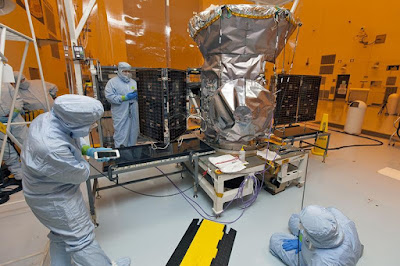 |
| The Transiting Exoplanet Survey Satellite will search more than 85% of the sky.Credit: Leif Heimbold/NASA |
Topics: Exoplanets, NASA, Planetary Science, Space Exploration, Star Trek
"Space: the final frontier. These are the voyages of the starship Enterprise. Her five-year mission: to explore strange new worlds. To seek out new life and new civilizations. To boldly go where no one has gone before." (Star Trek: Into Darkness)
Filling the shoes of NASA’s Kepler spacecraft won’t be easy. Since its launch in 2009, Kepler has discovered nearly three-quarters of the 3,700-plus known exoplanets. And there are thousands more candidates waiting to be confirmed.
So NASA is taking a different approach with its next planet-hunting mission. On 16 April, the agency plans to launch the US$337-million Transiting Exoplanet Survey Satellite (TESS), which will scrutinize 200,000 nearby bright stars for signs of orbiting planets. TESS will probably find fewer worlds than Kepler did, but they will arguably be more important ones.
“It’s not so much the numbers of planets that we care about, but the fact that they are orbiting nearby stars,” says Sara Seager, an astrophysicist at the Massachusetts Institute of Technology (MIT) in Cambridge and deputy science director for TESS.
TESS is meant to identify planets that are close enough to Earth for astronomers to explore them in detail. Team scientists estimate that the spacecraft will discover more than 500 planets that are no more than twice the size of Earth. These worlds will form the basis for decades of further studies, including searches for signs of life. “We’ll see a whole new opening of exoplanet studies,” Seager says.
NASA’s next exoplanet hunter will seek worlds close to home, Alexandra Witze, Nature
Comments